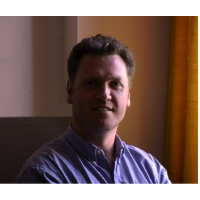Information Overload in the Digital Age

In the digital age two heads may no longer be better than one, according to new research led by Lancaster University Psychologist Professor Tom Ormerod.
The ESRC-sponsored research into information overload showed its effects were particularly apparent when people with different viewpoints attempted to share access to saved information.
As part of the project, which aimed to find better ways of organising information for shared use, researchers investigated how married couples catalogued and retrieved their digital photos now that the age of the shoebox full of prints and negatives is gone.
The team developed a novel digital photograph browser called TW3 - ‘The Way We Were’, which restricted the ways in which photos could be catalogued and retrieved by using the key word prompts - ‘Who’, ‘What’, ‘Where’ and ‘When’. When couples had jointly catalogued photographs, it was found that working together to retrieve photos was fruitful. However, when they had catalogued pictures on their own, it was a very different story.
Conversations couples had about their respective memories for photographs were also highly revealing, showing that their memories of events were often completely different, even about shared and intimate moments such as the birth of a child or their own wedding day.
Professor Ormerod said: “People mentally organize information in different ways, and cues that help one person recall may inhibit another. So retrieving information from computer systems, such as a keyword search in a library catalogue, may be impaired by a mismatch between the user’s mental organization and the cues provided by the system.”
The tumbling cost of digital photography means that it is now the norm for family snapshots. Digital storage creates opportunities for more flexible cataloguing and greater sharing, including over the Internet.
But research shows that when using existing software for handling digital photos, people either fail to catalogue their pictures, or are unable to find them again when they have.
Professor Ormerod said: “Part of the problem is that, in shifting from physical to digital, visible signs of storage such as albums, frames, and shoeboxes under the bed are lost.”
Commercial browsers allow flexibility in the way photographs are archived but do not have prompts as to who was in the photo, what was happening, and when and where it was taken. The study found that the commercial browser gave better results when people worked on their own to catalogue and retrieve, so long as they found the photos they wanted at the first attempt. This was because the browser allowed users to create highly specific labels for each photograph. These were really useful prompts, but only for the person who created them.
When people searched for photos which had been coded by others, results with TW3 were much better. And they were much more likely with that system to find photos they failed to get at the first attempt, whether using their own search words or someone else’s.